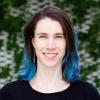Abstract
Food-caching birds have the impressive ability to store thousands of food items across their environment and to later retrieve them using hippocampus-dependent memory. Like primates, food-caching birds also depend heavily on vision to navigate. I will first describe our discovery of spatial representations in the avian hippocampus, suggesting a remarkable similarity in hippocampal circuit function between birds and mammals despite 300 million years of independent evolution. However, these spatial codes were enhanced in food-caching birds, compared to a species that does not cache food, indicating that the extent of place coding can vary according to ethological demands. More recently, I have developed a system to estimate gaze in freely moving birds, allowing us to behaviorally dissociate physical location from viewed location. I will present results using this system, which suggest that the hippocampus dynamically coordinates representations of physical and viewed locations during active vision.

Biography
Hannah Payne is a postdoctoral researcher in the Aronov lab at Columbia University. Her graduate studies with Jennifer Raymond at Stanford University examined how the cerebellum learns to control eye movements. As a postdoc, Hannah has combined her interests in vision and learning to investigate visual and physical codes for space in food-caching birds, with the goal of leveraging innate food-caching behavior to understand how perception and memory interact in hippocampal circuits.
